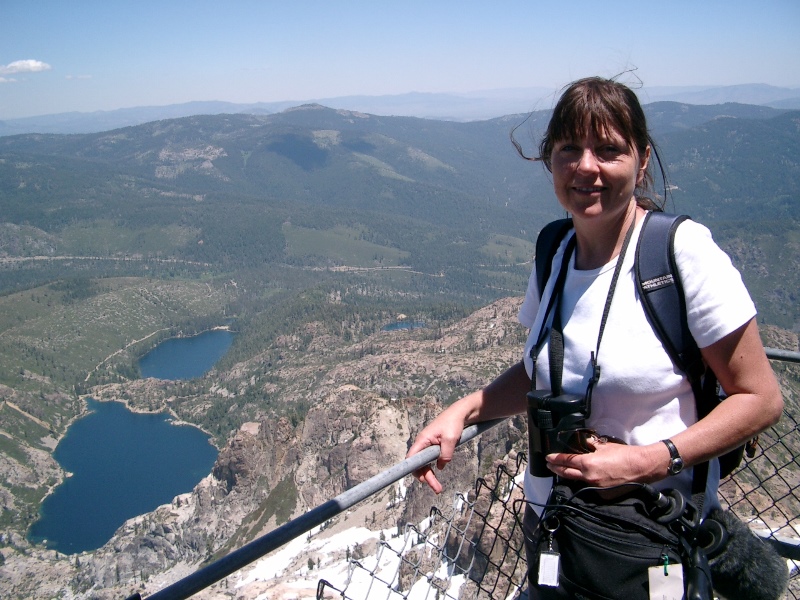当前位置:兰州大学草地农业科技学院 >>学术报告 >> 正 文
应兰州大学草地农业科技学院和草地农业生态系统国家重点实验室邀请,梅西大学自然与计算科学学院院长Dianne Brunton教授和统计学系教师Matthew Pawley博士将于2019年10月28日-30日来访并做学术报告,欢迎广大师生积极参加!
时间:10月28日(星期一)9:00-12:00
地点:碧野楼四楼报告厅
报告人:Dianne Brunton教授
时 间:9:00-11:00
题目一:Evolution of complex songs
简 介:I will talk about the research that we have done on bird song evolution – focussing on how female birdsong can help us understand the evolution of complex song. Bird song is still commonly regarded as a male trait that has evolved through sexual selection: a trait that attracts a mate and repels a competitor. However, recent research has highlighted the prevalence of female song and demonstrated that female song is an ancestral state for songbirds. If female song is the norm and not an anomaly, and was present early in the evolution of bird song, then we need to acknowledge its evolutionary significance and explore the selective drivers of female song evolution. Are the selective mechanisms of male and female song comparable? Have females evolved the similar morphologies to males for the production of complex song? My research group has focused on, the New Zealand Bellbird (Anthornis melanura), a model species where both males and females sing complex song, and where the sexes have little overlap in repertoires. Here I will discuss the insights that this field-based system has provided in understanding the evolution and function of song, and speculate on where this exciting field is heading.
题目二:Opportunities for Research and Graduate Studies in New Zealand: Trans-disciplinary Science in a Multicultural Society
简 介:Massey University is New Zealand’s’ second largest, and only multi-campus University. Massey is a world-leader in a range of pure and applied research areas, conducted in partnership with industries and other communities. We will provide an overview of Sciences at Massey, highlighting areas for collaboration and future growth. The School of Natural and Computational Sciences (SNCS) and the New Zealand Institute of Advanced Studies (NZIAS) are both based on the Auckland Campus. These groups contain world-class researchers in all fundamental science disciplines including Mathematics, Biology, Chemistry,Physics,Statistics, Computer Science, Information Technology and Data Science. SNCS and NZIAS emphasize collaborative research with 70+ permanent academic staff and Postdoctoral Fellows, and >150 PhD and Masters research students. We also provide innovative research–led undergraduate and postgraduate teaching programmes. The diverse science disciplines based in the groups provides excellent opportunities for trans-disciplinary research. We will highlight a few recent examples and outline pathways for PhD supervision and research collaborations between Guangxi Normal University and Massey University.
报告人:Matthew Pawley博士
时 间:11:00-12:00
题 目:A measure of central tendency for ecological communities.
简 介:Ecologists commonly analyse the abundance of a community of species using a ‘similarity measure’ (e.g. the Bray–Curtis measure) which quantifies the degree to which samples share common species. However, a fundamental issue with such analyses is the lack of any measure of centrality (e.g. mean, or equivalently, when dealing with many variables, a centroid) that is defined with respect to the original variables (e.g. counts of species abundance). Researchers commonly skirt the problem by projecting the data into a different (principal-coordinate [PCO]) space; but these PCO-based centroids are not directly interpretable with respect to the original species variables.In this non-mathematical talk, I will discuss my work (with Marti Anderson and Adam Smith) that develops a novel method of calculating the centre of the data in the relevant similarity space that is interpretable with respect to the original species variables. We hope that this may lead to a suite of new analytical tools for ecologists.
报告人简历:

Professor Dianne Brunton is a behavioural ecologist and currently Head of the School of Natural and Computational Sciences at Massey University’s Auckland Campus. Dianne completed a BSc and MSc in Zoology at the University of Auckland, and a PhD on the breeding biology of a plover (killdeer) in wildlife biology at the University of Michigan, Ann Arbor. She completed Postdocs at University of California, Berkeley on western gulls and Yale University on least terns, before returning to take up an academic position at the University of Auckland in 1991. In 2005, Dianne moved to Massey University and established the Ecology and Conservation Group. In 2013 she was promoted to Professor and in 2016 became Head of School. Her research contributions are in social behaviour and the evolution and ecology of animal communication with a focus on bird song. She has been the PI on two Marsden funded projects (Saddleback song dialect and male and female song in NZ bellbirds) and has published 130+ research publications in peer reviewed journals. Dianne has been the primary supervisor to >30 PhD and >70 MSc students and was awarded the Massey University Research medal for supervision in 2017. She has contributed both nationally and internationally to research panels (including, Rutherford, Marsden, PBRF, and NSF) and is currently the Chair of the Auckland Zoo Conservation Fund.

Dr Matthew Pawley is an applied statistician specializing in the analysis of ecological data, with particular emphasis on multivariate methods. Dr Pawley obtained his PhD in Biostatistics at Auckland University in 2007 and completed his postdoc research at Massey University in 2011. From 2012, Dr Pawley has been teaching bio-statistical courses at and is currently a senior lecturer at Massey University. Dr Pawley’s theoretical research has focused on developing methods that regularize (i.e. automatically constrain) ecological resemblance-based analyses. On example is the creation of ecological control charts—a way to determine whether a site has been impacted by examining changes in organism abundance. In addition Dr Pawley has ongoing collaborations with ecologists, engineering scientists and computer scientists to develop and apply machine learning and computer vision methods (such as Deep Learning) to ecological data.